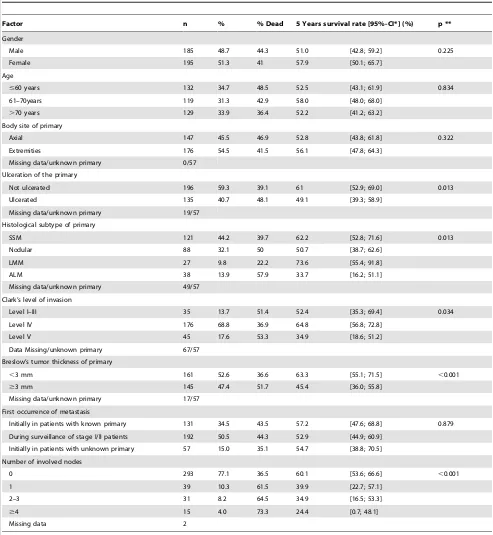Prognostic factors of melanoma patients with satellite or in-transit metastasis at the time of stage III diagnosis
Full text
Figure



Related documents
that the administration of bisphosphonates including zole- dronic acid and pamidronate may provide a survival benefit in patients with metastatic breast cancer with HR-negative
Kaplan Meier survival curves according to (A) the site of distant metastasis, (B) the presence of brain metastases, (C) the LDH serum level, (D) the S100B serum level, (E) the type
Abstract: The purpose of the study was to analyze the prognostic value of metastatic lymph node ratio (LNR) in pancreatic cancer (PC) patients undergoing surgical operation..
Prognostic factors in patients with metastatic spine tumors derived from lung cancer?a novel scoring system for predicting life expectancy RESEARCH Open Access Prognostic factors
CUAJ ? Original Research Yokom et al Metastatic CRPC treated with cabazitaxel Prognostic and predictive clinical factors in patients with metastatic castration resistant prostate
In this study of patients who have undergone a margin-negative liver resection for colorectal metastases, we sought to confirm that the prognostic value of risk-scoring
In conclusion, the Breslow thickness is the most impor- tant prognostic factor for DFS and OS in Taiwanese patients with clinically node-negative cutaneous melanoma who receive
In conclusion, for patients with CRC who receive UFT / LV adjuvant chemotherapy, three independent prognostic factors ― T4 lesions, emergency operation, and a